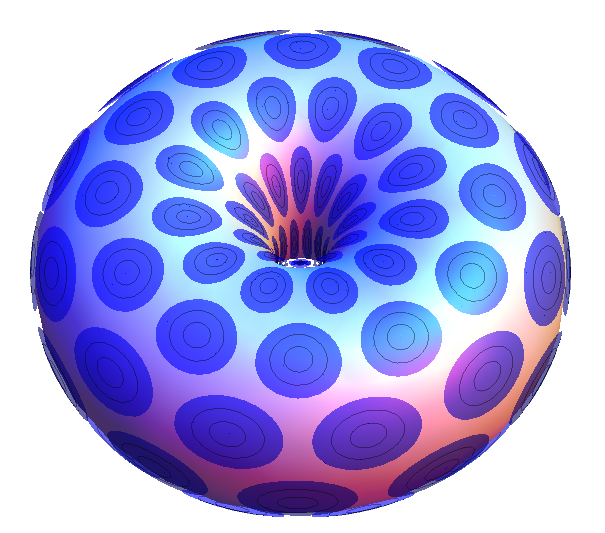Every surface admits metrics of constant curvature, but there is usually a disconnect between these metrics, the shapes of ordinary objects, and typical mathematical drawings of surfaces.
Can anyone give an explicit and intuitively meaningful formulas for negatively curved metrics that are related to an embedding of a surface in space?
There is an easy way to do this for an open subset of the plane. If the metric of the plane is scaled by a function that is $\exp$ of a harmonic function, the scaling factor is at least locally the norm of the derivative of a complex analytic function, so the resulting metric is still flat; the converse is true as well. Therefore, the sign of curvature of a conformally modified metric $\exp(g)$ depends only on the sign of the laplacian of the $g$. If the value of $g$ at a point is less than the average value in a disk centered at that point, then the metric $\exp(g) ds_E$ is negatively curved, where $ds_E = \sqrt(dx^2 + dy^2)$ is Euclidean arc length. alt text http://dl.dropbox.com/u/5390048/NegativeMetrics.jpg
For example, in a region $R$, if we impose a limit that speed is not to exceed the distance to the complement of $R$, this defines a non-positively curved metric. (The metric is 1/(distance to boundary)$ds_E$). In this metric, geodesics bend around corners: it doesn't pay to cut too close, it's better to stay closer to the middle. If the domain is simply-connected, you see one and only one image of everything, no matter where you are.
There are a number of other ways to write down explicit formulas for negatively curved or non-positively curved metrics for a subset of the plane, but that's not the question: what about for closed surfaces in space? Any closed surface $M^2$ has at least a total of $4 \pi$ positive curvature, where the surface intersects its convex hull. If $M$ is a double torus, how can this be modified to make it negative? It would be interesting to see even one good example of a negatively curved metric defined in terms of Euclidean geometry rather than an indirect construction. (In particular: it can be done by solving PDE's, but I wwant something more direct than that.)




